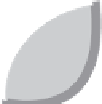Biology Reference
In-Depth Information
Transformation to active form
Facilitates activation
Inhibits activation
Factor/Toxin
Venom component causing activation or direct action
Venom component causing inhibition
Factor/Toxin
Factor/Toxin
Venom component found in colubrine, xenodontine or natricid venoms/secretions from
species noted
Tissue Factor
Ca++
Factor XI
Factor XIa
Factor IX
Factor IXa
Factor VIIIa
Factor VII
Factor VIIa
Factor VIII
Anticoagulant
protein
Protein C
activator
Factor VIIIa
Factor IXa
Factor X activation
in venom of
D. typus, R. tigrinus
R. subminiatus
1
Prothrombin
activation in venom of
D. typus, T. kirtlandii
R. tigrinus, R. subminiatus
1
Factor V
Ca++ PL
Factor X
activator
Factor V
activator
Factor X
Factor Xa
Factor Va
TAFI
Prothrombin
activators
Factor Xa
Factor Va
Thrombin
TM Ca++
TAFIa
Ca++ PL
Factor XIII
Antithrombin
Prothrombin
Thrombin
Fibrinogenolytic metal-
loproteases in Duver-
noy's secretion of
P.
olfersii
2
TM
Serpin
inactivator
Fibrinogen
Fibrin
Fibrin(ogen)olysins
Thrombin-like
enzymes
Factor XIIIa
Plasminogen
activator
Disintegrins
Plasminogen
Fibrinopeptide
A or B (no clot)
Phospholipase
Aggregation
inhibitors
Aggregation
activators
α
-2 antiplasmin
Cross-linked fibrin
Plasmin
Serpin
inactivator
Fibrin degradation products
Hemorrhagic
metalloproteinases
Consumption
of clotting
factors with
action of
proteases and
disintegrins
result in
hemorrhagic
diathesis due
to endothelial
damage
P l a t e l e t s
Disintegrins
Platelet aggregation inhibition
by endothelial cells
Prostacyclin
Adenosine
Protease nectin
Enhance protein C
activation
Enhance ATIII
serotonin
removal
Thrombomodulin (TM)
Endothelial Cells
Subendothelial basement membrane
1
There are inconsistent data regarding Factor X activating features of
R. subminiatus
venom. See text (Section 4.3) for details.
2
Detected and reported from
in vitro
studies only.
Figure 4.1
The effects of characterized toxins from non-front-fanged colubroids on
hemostasis.
Coagulation is accomplished through a complex cascade of proteolytically active
clotting factors that act on successive factors and ultimately form a fibrin clot through the
action of thrombin on fibrinogen. As a simplified summary, there are two classic pathways
of activation: the intrinsic pathway and the extrinsic pathway. The intrinsic pathway is
less significant than the extrinsic pathway to the maintenance of hemostasis under normal











































































































































